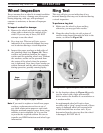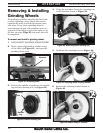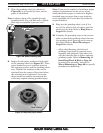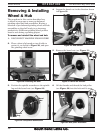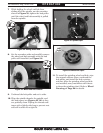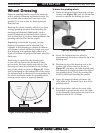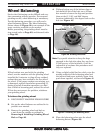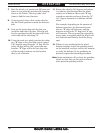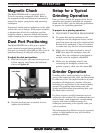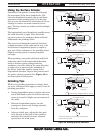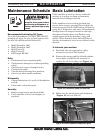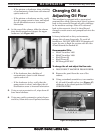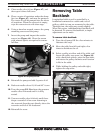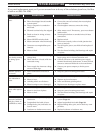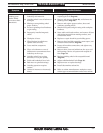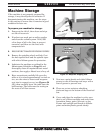
For Machines Mfg. Since 8/09 Model SB1029
-31-
OPERATION
Grinder Operation
Grinding with a surface grinder is a delicate
process that takes practice, skill, and knowledge.
In addition to this, the method used for any one
procedure will depend on a number of factors,
including, but not limited to the material being
ground, the grinding wheel being used, the
quality and calibration of measuring tools, and
the finish that is desired.
For these reasons, specific techniques are not
outlined in this manual. We recommend that you
consult books, trade magazines, metalworking
experts, and other reliable resources for
techniques pertaining to the specific tasks you
wish to perform.
The information that follows serves as a general
outline to help familiarize you with the basic
grinding technique.
Magnetic Chuck
The Model SB1029 table is equipped with a
T-slot for securing a magnetic chuck. Refer to
the magnetic chuck manufacturer's instruction
manual for proper preparation and mounting
techniques.
A magnetic chuck secures workpieces to the table
without the use of clamps. With proper attention
to preparation of both the workpiece and the
magnetic chuck, a magnetic chuck will provide
ample clamping force on most magnetic metals.
Setup for a Typical
Grinding Operation
Once you have chosen the proper wheel for the
operation and properly installed the magnetic
chuck on the table, use the following procedures
to prepare for a grinding operation.
To prepare for a grinding operation:
1. DISCONNECT MACHINE FROM POWER!
2. To ensure flat mating surfaces on the
workpiece and the magnetic chuck, surface
grind and stone the top of the chuck and the
bottom of the workpiece. Clean all surfaces
to make sure they are free of contaminants.
3. Make sure the magnetic chuck is turned
OFF, then place the workpiece onto the
chuck. Once the workpiece is positioned as
needed, turn the magnetic chuck ON.
4. Make sure the grinding wheel is not
contacting the workpiece, connect the
grinder to power, then turn the motor ON.
Dust Port Positioning
The Model SB1029 has a dust port to gather
waste material created during grinding. The
dust port is vertically adjustable so that it can be
positioned directly in the path of the sparks.
To adjust the dust port position:
1. Hold the dust port with one hand to prevent
it from moving, then loosen the lock knob
shown in Figure 42.
2. Position the dust port as needed, then re-
tighten the lock knob.
Figure 42. Dust port lock knob.
Lock Knob



